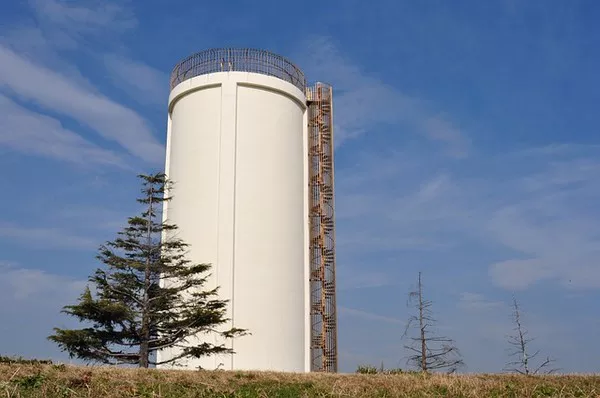Sewage treatment plants play an indispensable role in managing and purifying wastewater before it is returned to the environment. However, one issue that often plagues these facilities is the presence of unpleasant odors. The distinct smell emanating from sewage treatment plants has long been a concern for both facility operators and nearby communities. While these odors can be a nuisance, they also raise questions about the processes and conditions that give rise to such olfactory challenges. This article delves into the factors that contribute to the odors associated with sewage treatment plants and explores potential solutions to mitigate this issue.
The Composition of Odors
The smell associated with sewage treatment plants is primarily a result of the complex mix of gases released during the treatment process. Wastewater, upon reaching the plant, contains organic matter, chemicals, and microorganisms. As the treatment process unfolds, these components undergo various transformations, releasing gases such as hydrogen sulfide (H2S), ammonia (NH3), and volatile organic compounds (VOCs). These compounds are notorious for their foul odors, and their presence is amplified as wastewater undergoes biological and chemical treatment steps.
Biological Processes and Odor Generation
Biological treatment processes are essential in breaking down organic matter and reducing pollutants in wastewater. These processes, such as activated sludge and anaerobic digestion, involve the action of microorganisms that feed on organic substances. However, the metabolism of these microorganisms produces byproducts, including hydrogen sulfide, which is a major contributor to the characteristic “rotten egg” smell commonly associated with sewage treatment plants.
Hydrogen sulfide is a colorless gas that has a strong, unpleasant odor even at low concentrations. It is released during the decomposition of sulfur-containing organic compounds present in wastewater. Factors such as pH levels, temperature, and the type of microorganisms present influence the rate of hydrogen sulfide production. Anaerobic conditions, where microorganisms thrive in the absence of oxygen, can accelerate the generation of this malodorous gas.
Chemical Reactions and Their Influence on Odors
Chemical reactions within sewage treatment processes also contribute to the release of odor-causing compounds. For instance, the reaction between ammonia and organic matter leads to the formation of various nitrogen-containing gases, including ammonia itself. Ammonia has a pungent smell and can contribute to the overall odor profile of sewage treatment plants. The formation of volatile organic compounds (VOCs) through the degradation of organic matter further amplifies the olfactory challenge.
Operational Factors Impacting Odor Emission
Several operational factors within sewage treatment plants can exacerbate the release of odors. Insufficient aeration in biological treatment processes can lead to anaerobic conditions, fostering the growth of microorganisms that produce hydrogen sulfide. Poor mixing of wastewater and sludge can also result in localized pockets of high organic concentration, intensifying odor emissions.
Inadequate maintenance of the infrastructure, such as deteriorating pipelines and equipment, can lead to leaks and seepage, releasing foul-smelling gases directly into the environment. Additionally, improper handling of chemicals, improper waste management, and poor management of biosolids can contribute to the emission of unpleasant odors.
Local Climate and Meteorological Conditions
Meteorological conditions play a crucial role in the dispersion and perception of sewage treatment plant odors. Weather factors such as wind speed and direction, temperature inversions, and atmospheric stability can greatly influence how far and wide the odors disperse. Under stagnant or low-wind conditions, odorous compounds may linger around the plant and surrounding areas, leading to heightened annoyance for nearby residents.
Mitigating Sewage Treatment Plant Odors
The battle against sewage treatment plant odors requires a multifaceted approach involving engineering, technology, and operational improvements. Here are some strategies that can help mitigate the release of unpleasant odors:
Optimizing Treatment Processes: Fine-tuning treatment processes to ensure proper aeration, mixing, and maintenance of optimal conditions for microorganisms can reduce the production of odor-causing gases.
Chemical Additives: Introducing chemical additives that react with and neutralize odorous compounds can help control the release of foul smells. These additives can alter the chemical pathways of odor generation and conversion.
Covering and Containing: Implementing covers and enclosures for certain treatment units can prevent the direct release of gases into the at mosphere. This containment can then direct the gases to specialized treatment units before release.
Biofilters and Scrubbers: Installing biofilters and scrubbers can help capture and treat odor-causing gases before they are released into the environment. These systems use microbial activity or chemical reactions to break down the compounds.
Waste Management: Proper management of biosolids and chemical wastes can reduce the accumulation of organic matter that contributes to odorous emissions. Implementing efficient waste handling practices can prevent the release of foul-smelling gases.
Community Engagement: Engaging with the local community and addressing their concerns can foster understanding and cooperation. Regular communication and transparency about odor control measures can help mitigate tensions.
Conclusion
Sewage treatment plants play an essential role in maintaining environmental health and water quality. However, the odor challenges associated with these facilities cannot be overlooked. Understanding the biological and chemical processes that generate foul-smelling compounds is crucial for devising effective odor control strategies. By implementing a combination of engineering solutions, technological advancements, and operational improvements, sewage treatment plant operators can significantly reduce the emission of unpleasant odors and contribute to healthier and more harmonious communities.

